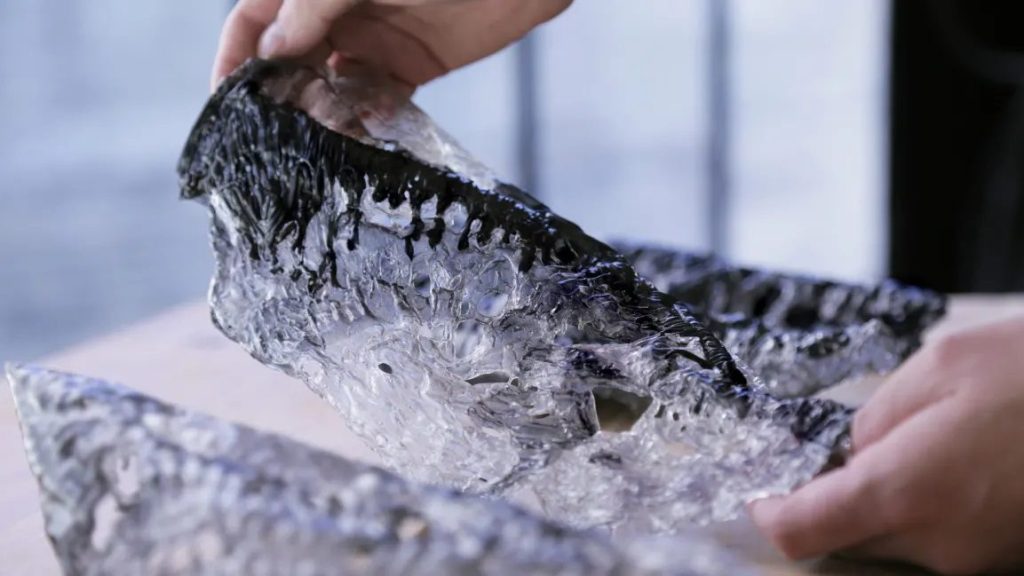Hanging from a wall, a new design called BioScales looks like an abstract sculpture. But it’s also designed to capture CO2 and pollution from the air and later to be composted, returning carbon to the soil.
The design, a finalist for the 2020 Lexus Design Award, was developed by the Los Angeles-based firm Sutherlin Santo. “Living downtown, dealing with the air quality here and dealing with the fallout from the wildfires, we found ourselves bringing equipment into our apartment to clean the air,” says partner Paul Sutherlin Santo. “We conceptually considered what could we do that didn’t amount to introducing new tech but used existing surface area.”
The design is still at an early stage, and the designers haven’t yet calculated what impact it could have on air quality. To begin to have an impact on CO2, it would have to be deployed at a large scale—and installing BioScale tiles on the exterior walls of a large building, for example, would pose some logistical challenges in terms of removing and replacing the tiles as they become saturated with smog. Still, it’s an interesting experiment: What if more materials not only reduced their own environmental impact, but also actively tried to go farther? “As we deal with whatever the environmental state is going to be as we move forward in the next few decades, I think it’s pretty vital that materials themselves are being designed with the same care as the products that they’re being applied to,” says Garett Sutherlin Santo.
Source: Fast Company
Click here for the full article.

